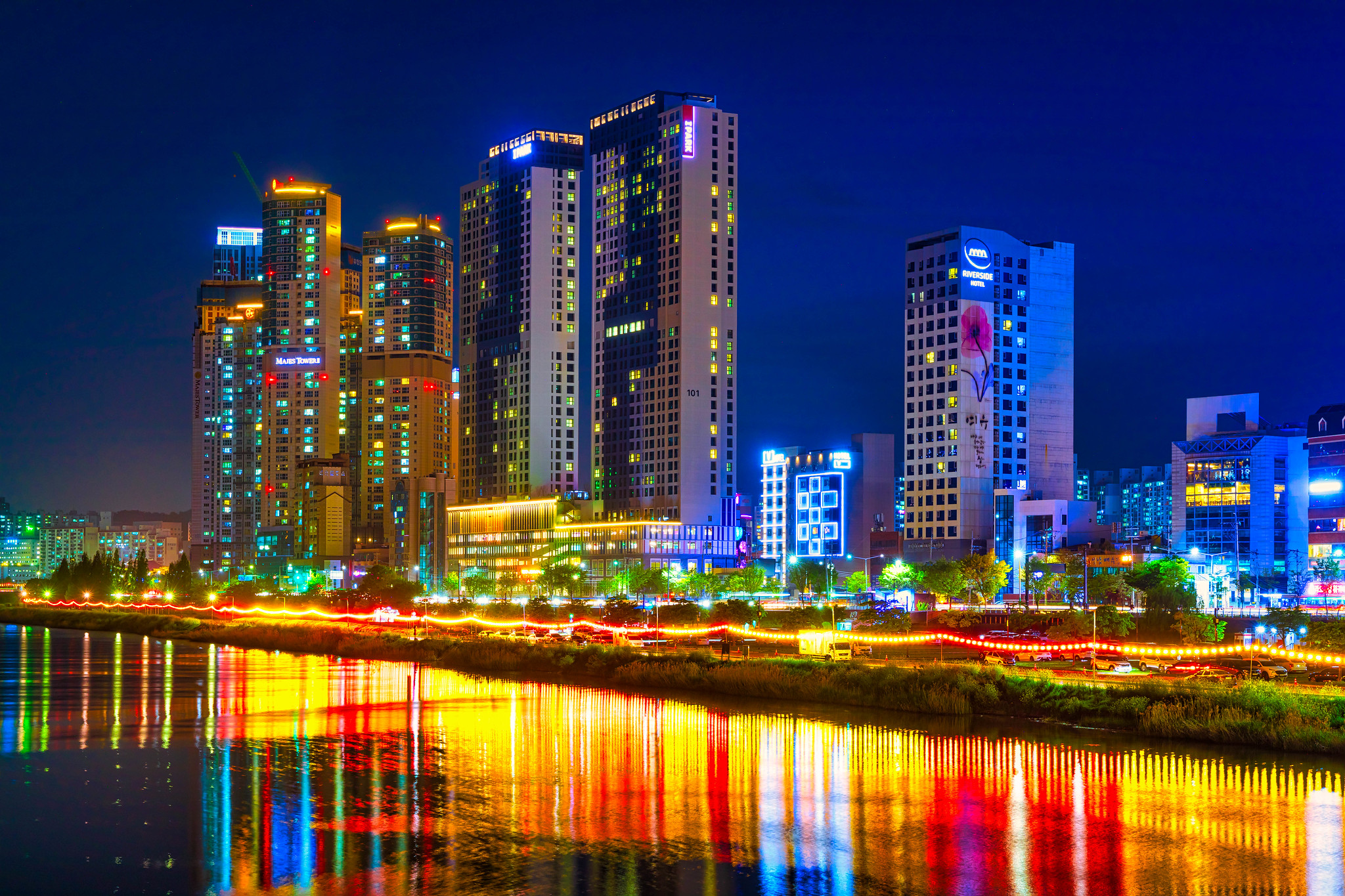Capturing the Vibrant Nightscape: A Guide to Urban Night Photography in South Korea
South Korea, a land of bustling streets, neon-lit alleys, and towering skyscrapers, offers a plethora of opportunities for capturing stunning urban nightscapes. As a photographer based in this dynamic country, diving into the realm of night photography unveils a canvas of vibrant city lights and captivating architectural marvels. In this comprehensive guide, we’ll explore the art and techniques behind urban night photography in South Korea, from essential equipment to composition tips and post-processing tricks.
Gear Essentials
Before venturing into the nocturnal realm, it’s crucial to equip yourself with the right gear. A sturdy tripod is your best companion for long exposure shots, ensuring sharpness and stability in low-light conditions. Pair it with a wide-angle lens to encompass expansive cityscapes and capture the grandeur of South Korea’s urban landscapes. Additionally, carrying spare batteries and memory cards ensures uninterrupted shooting sessions amidst the city’s electrifying ambiance.
My main recommendation for tripods these days are tripods from K&F Concept. They are well built and relatively affordable. Not to mention, that even when ordering one of their more expensive carbon fibre tripods, I had no troubles betting it through Korean customs.

Choosing the Perfect Location
South Korea’s cities boast a myriad of picturesque locations for night photography. Seoul’s iconic landmarks such as the futuristic Dongdaemun Design Plaza, the illuminated Gwangali bridge in Busan, and the bustling streets of Ulsan offer endless possibilities for creative compositions. Busan’s vibrant nightlife scene and the Cheongaechon Stream in Seoul provide additional opportunities for capturing stunning cityscapes. Researching potential shooting locations beforehand enables you to plan your shoot effectively and maximize your time on-site.

However, don’t give up if you don’t live in Seoul or Busan. The beauty of Korea is that any downtown area or “shinae” will have the same elements that many of the larger cities have. They will have tons of traffic, flashing signs and interesting buildings. Use there elements to create your own nightscapes of Korea.

Mastering Exposure and Settings
Achieving the perfect exposure is paramount in night photography, where light is scarce yet dynamic. Start by setting your camera to aperture priority mode and dialing in a low ISO to minimize noise. Experiment with long exposure times, ranging from a few seconds to several minutes (in manual mode), to capture the trails of passing vehicles or the mesmerizing flow of city lights. Utilize a wide aperture (low f-stop) to maximize light intake and create captivating bokeh effects. Additionally, using a remote shutter release minimizes camera shake and ensures sharp, blur-free images.
One tip that I use is by downloading the app for your camera, if it has one. This will allow you to use your phone as a remote shutter. If you don’t have that feature, use the 2-second timer on your camera to get a hands-free shot. If you use a canon camera and are bracketing your shots, then this will also shoot all of your images in succession without having to shoot them individually.

Composition Techniques
Composition plays a pivotal role in creating compelling urban nightscapes. Incorporate leading lines, such as roads or bridges, to guide the viewer’s gaze through the frame and add depth to your images. Experiment with different perspectives and angles to highlight the juxtaposition of modern architecture against the night sky. Utilize reflections from puddles or glass surfaces to introduce intriguing visual elements into your compositions. Remember the rule of thirds and consider placing key elements, such as city landmarks or light trails, along the intersecting points for added visual interest.

Night photography in Korea is something that really allows you to experiment with your composition. Try shooting in tight alleyways or using the lightrails of the endless streams of traffic to help make your shots really pop. No matter where you live in Korea, you can find areas that will be amazing for street photography.
Post-Processing Magic
Post-processing allows you to enhance and refine your night photographs, bringing out the full potential of your captures. Software such as Adobe Lightroom or Luminar Neo enables you to fine-tune exposure, contrast, and color balance to achieve a desired aesthetic. Adjusting white balance settings can help correct any color casts introduced by artificial lighting, ensuring accurate and vibrant hues. Experiment with selective dodging and burning to emphasize specific areas of your image and create a sense of drama and depth.

The bottomline is that urban night photography in South Korea is a captivating journey into the heart of bustling metropolises, where the cityscape transforms into a mesmerizing tapestry of light and shadows. Armed with the right gear, technical know-how, and creative vision, photographers can unlock the full potential of this dynamic genre, capturing the essence of South Korea’s vibrant urban landscape under the cloak of night.
The post Capturing the Vibrant Nightscape: A Guide to Urban Night Photography in South Korea appeared first on The Sajin.





















































 Curious about how to say “nothing” in Korean? The main word for “nothing” in Korean is 아무것도 (amugeotdo). This main word, however, … “Nothing” in Korean – How to say this word in Hangeul CONTINUE READING The post “Nothing” in Korean – How to say this word in Hangeul appeared first on 90 Day Korean.
Curious about how to say “nothing” in Korean? The main word for “nothing” in Korean is 아무것도 (amugeotdo). This main word, however, … “Nothing” in Korean – How to say this word in Hangeul CONTINUE READING The post “Nothing” in Korean – How to say this word in Hangeul appeared first on 90 Day Korean. Learn to read Korean and be having simple conversations, taking taxis and ordering in Korean within a week with our FREE Hangeul Hacks series:
Learn to read Korean and be having simple conversations, taking taxis and ordering in Korean within a week with our FREE Hangeul Hacks series:
Recent comments